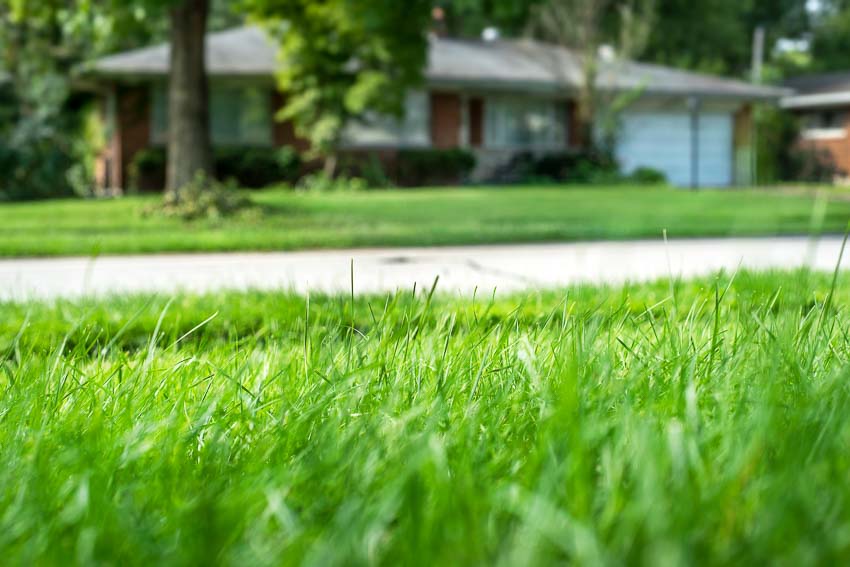Are you tired of your grass lawn and want to try something new? Transitioning to low maintenance grass alternatives is a great way to have a beautiful yard without being bothered by the hassles of a traditional lawn.
Exploring Types of Low Maintenance Grass Alternatives
A lush, green lawn in your yard makes your home seem more inviting and can enhance your property’s curb appeal.
Lawns have numerous benefits. This includes covering the ground to prevent dust and erosion and naturally filtering pollution from the air. Wide expanses of grass also have a cooling effect.

But lawns are the only way to achieve these benefits, even though they’ve been the standard in American yards for decades. There are dozens of ways to cover the ground and enjoy the same benefits that a lawn offers without all the fuss.
Grass lawns are monocultures that require an enormous amount of time and money to sustain. Will one of these low maintenance grass alternatives fit better with your lifestyle and allow you to have a more climate-conscious yard?
Artificial Turf
Artificial grass has come a long way since it was first invented, and since it reduces water consumption by about 70%, it’s a good alternative to grass if you live in an area with watering restrictions.
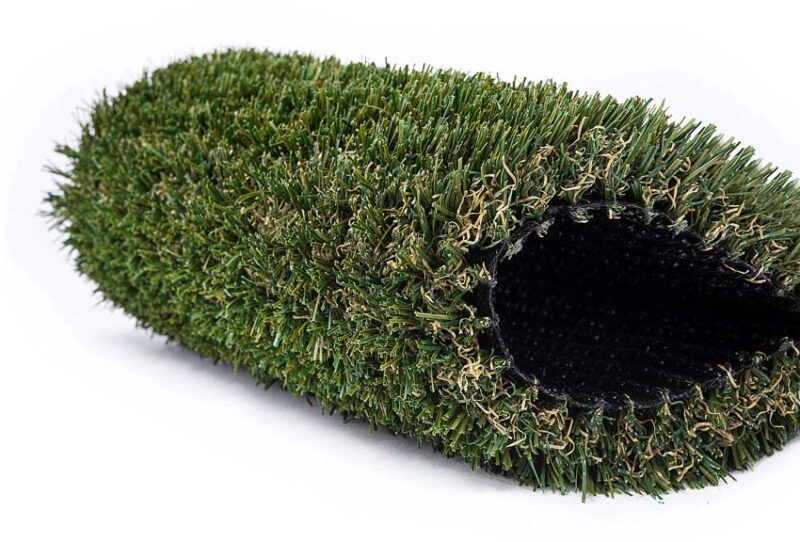
Once artificial grass is installed, it’s extremely low maintenance. All you need to do is remove debris once a week, rinse it, and brush it to keep it looking good. You may have to pull a stray weed now and then, but for the most part, it’s carefree.
If you’re concerned about the environment, using a product made out of PVC or nylon might seem odd. However, unlike growing a real lawn, artificial grass eliminates the need for harsh chemicals like synthetic fertilizers, herbicides, and pesticides. This makes it a much more eco-friendly option.
Ground Covers
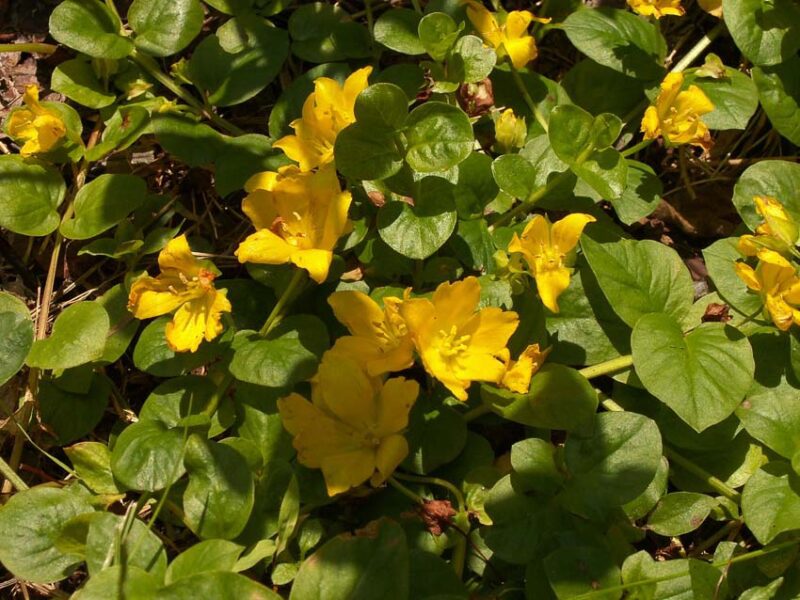
Ground covers pair nicely with many different kinds of mulch, including pea gravel, river rocks, rubber mulch, and wood mulch. Best of all, many of them grow without needing a lot of extra water, so they are a good grass lawn alternative.
When it comes to ground covers, you have a lot of choices, and you don’t have to take out your entire lawn to start experimenting with different types. You can start trying out ground covers by replacing a strip of lawn with Irish moss or creeping Jenny.
Another option is removing the grass in corners that are hard to mow and switching to vinca or creeping thyme.
For shady backyard areas, ground covers for shade will thrive where your grass struggles, giving you less to worry about.
Native Grasses
There are an estimated 13,000 species of grass in the world, but only about a dozen of those require intense amounts of water and care to thrive. Many species of turfgrass are native to other parts of the world. As such, they require intense amounts of water and care to thrive.
Depending on how you use your yard, you may still need to mow, water, and fertilize native grasses, but they won’t require the same amount of coddling that turfgrasses need.
If your lawn doesn’t get much heavy foot traffic, native grasses can be a great choice for your yard. Due to their extensive root systems, native grasses are better for controlling erosion and capturing sediment during rainstorms. They also provide better habitat for wildlife.
Ornamental Grasses
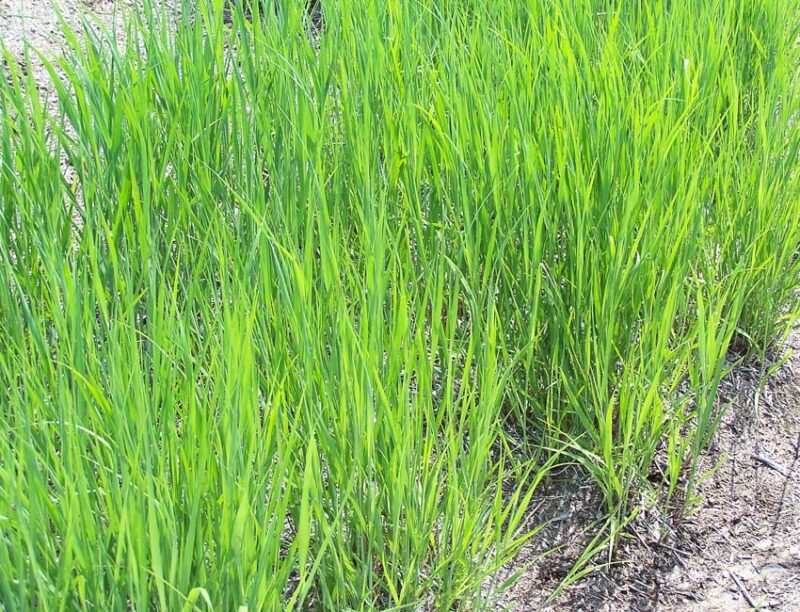
Ornamental grasses are easy to grow. They are an attractive way to xeriscape your yard, and once you start experimenting with them, it’s easy to fall in love with their graceful beauty and low maintenance requirements.
Ornamental grasses come in many sizes, from as short as a foot to as tall as twelve feet. The leaves, plumes, and seed heads offer various hues to enjoy throughout the seasons. Moreover, they will make your backyard more biodiverse by attracting pollinators and birds.
Large species of ornamental grasses are an excellent source of cover for small wildlife, including rabbits. For this reason, many people plant them at the edge of their property or use them to attract predators like owls and hawks.
Understanding the Cost of Low Maintenance Grass Alternatives
How much does transitioning your yard to a low maintenance grass alternative cost? The initial investment cost depends on the type of grass alternative you choose, but the lower maintenance costs and upkeep should balance out in the long run.
Initial Investment
Several factors will influence how much it costs to transition to a low maintenance yard, including the size of your yard, how much of it you’re changing, and your timeline.
For example, removing your grass lawn and installing artificial turf will typically cost you about $2 to $6 per square foot, not including labor.
You can plant a wildflower meadow for much less than that, and if you DIY it, you only need to cover the cost of the seed mix and some soil amendments.
If you’re planting ornamental grasses, expect to pay about $10 to $20 per plant. Alternatively, you could start them yourself from seed for a fraction of the cost, but it will take longer.
Other alternatives to grass lawns, like gravel and mulch areas or water features, have a wide range of costs. If you’re working with a tight budget, take it slow and replace your lawn one section at a time to keep upfront costs low.
Maintenance and Upkeep Costs
Grass lawns are expensive to maintain, even if you do all the work yourself. If you’re paying for professional lawn care, switching to a carefree alternative like artificial turf can pay for itself quickly.
Depending on where you live, you can save enough in maintenance costs to make a low maintenance grass alternative a financially attractive option. In some regions, lawn care costs are incurred all year, and switching to an alternative will be financially beneficial.
Benefits of Low Maintenance Grass Alternatives
Traditional grass lawns are attractive, but there is no denying the appeal of alternative landscapes. Beyond the aesthetic benefits, there are many other reasons to love having a low maintenance yard instead of a grass lawn.
Reduced Water Consumption
Lawns are thirsty. It’s estimated that grass lawns consume about 40% to 50% of residential water usage. If your water bill is high or your lawn is suffering because of watering restrictions, the reduced water needs of a grass lawn alternative is an important benefit.
Drought-tolerant lawns and xeriscapes are the top choices when reduced water consumption is your primary concern. If you decide to switch to one of these types of landscapes, you’ll be surprised at how many choices of plants you have.
Minimal Mowing and Maintenance
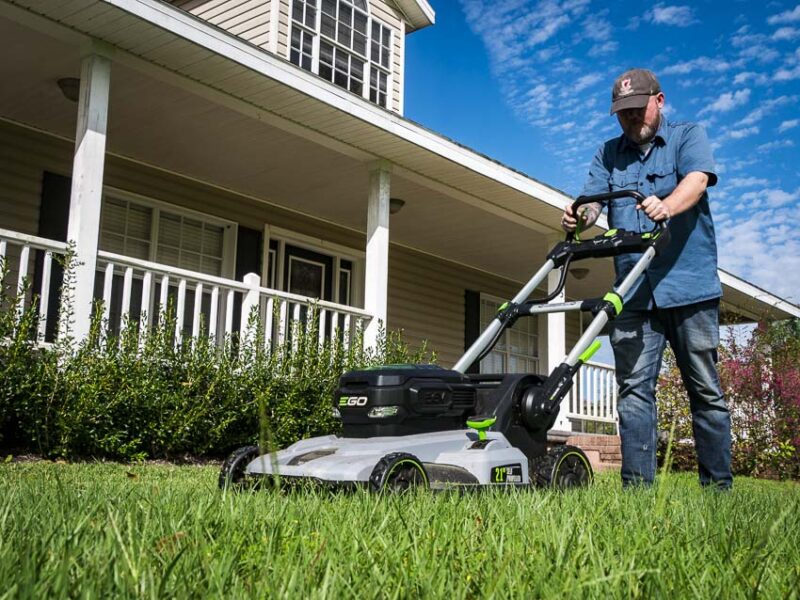
Traditional grass lawns require frequent mowing, about every 5 to 7 days, during peak growing conditions. If you install artificial grass, you can cut that down to zero.
If you’re still interested in having a grass lawn, native grasses are a good choice. They require less mowing, fertilizing, and watering, but you can still enjoy the benefits of a manicured grass yard.
Environmental and Aesthetic Benefits
The decision to switch to a low maintenance grass alternative opens the door to more choices than you can imagine. Depending on your chosen garden aesthetic, you can turn your lawn areas into water features, outdoor living spaces, wildflower meadows, and rock gardens.
There are many environmental advantages to replacing your grass lawn with an eco-forward alternative. Reduced water and fuel consumption and fewer emissions are the top environmental reasons to switch. Moreover, you’ll enjoy using fewer herbicides, pesticides, and synthetic fertilizers.
How to Transition to Low Maintenance Grass Alternatives
How do you transition to a grass lawn alternative? That depends on the type of landscaping you choose, but every method will require site preparation, installation and planting, and ongoing care and maintenance.
Most plants do best when planted during the spring or fall, so that’s the best time to transition to a low maintenance grass alternative. Spring is the time of year when you’ll have the largest selection of bedding plants available at nurseries.
Site Preparation
Careful site preparation is critical to the success of all landscaping projects. Measure the area you plan to use, and devise a solid plan for your grass alternative.
Removing the sod using one of the following methods:
- Remove vegetation manually with tools like shovels, rakes, and hoes.
- Use a rear-tine tiller.
- Apply herbicide, removing the dead vegetation easier after about 10 to 14 days.
- Use clear plastic to solarize the area. It takes about a month to kill grass and weeds, making them easier to remove.
- Use a sod cutter to remove sections of your lawn. This is the quickest method, and SOC cutters are available for rent or purchase at home improvement stores.
Many grass lawn alternatives don’t need soil as rich as that required by a grass lawn. Depending on what type of landscaping you’re transitioning to, you may need a soil test to determine if your soil needs any amendments.
Installation and Planting
Inanimate features made from building materials, like wood, gravel, concrete, and mulch, are hardscaping features, and together they form the structure, or backbone, of your landscaping.
When installing and planting a new landscape, you must install hardscaping features first. Have a detailed plan for your yard, and install features like paths, water fountains, irrigation systems, and landscape lighting systems before planting trees, shrubs, and perennials.
Once your hardscaping features are installed, you can start planting. Use recommended spacing for the plants you’ve selected, and keep the height of plants in mind as you place them in your landscape.
Ongoing Care and Maintenance
Once your grass lawn alternative is installed, continue to provide ongoing care and maintenance. It will require more care during the first year while it gets established, but after that, you can enjoy a carefree landscape without the hassle of a grass lawn.
FAQ: Common Questions About Low Maintenance Grass Alternatives
1. Can I install low maintenance grass alternatives myself?
You can install a low maintenance grass alternative yourself, and you don’t have to convert your entire yard at once. Start small, remove the hard-to-mow areas first, then work your way through your yard, focusing on one area at a time. You can plant a wildflower meadow in your front yard to attract butterflies and use gravel and mulch in your backyard patio area to create a low maintenance outdoor living space.
2. Will low maintenance grass alternatives work in all climates?
There are low maintenance grass alternatives for every climate. Xeriscaping with native plants and gravel mulch is a popular choice for arid climates, and for cold climates, you can choose ground covers that will grow in your Hardiness Zone .
3. Can I still have a green lawn with these alternatives?
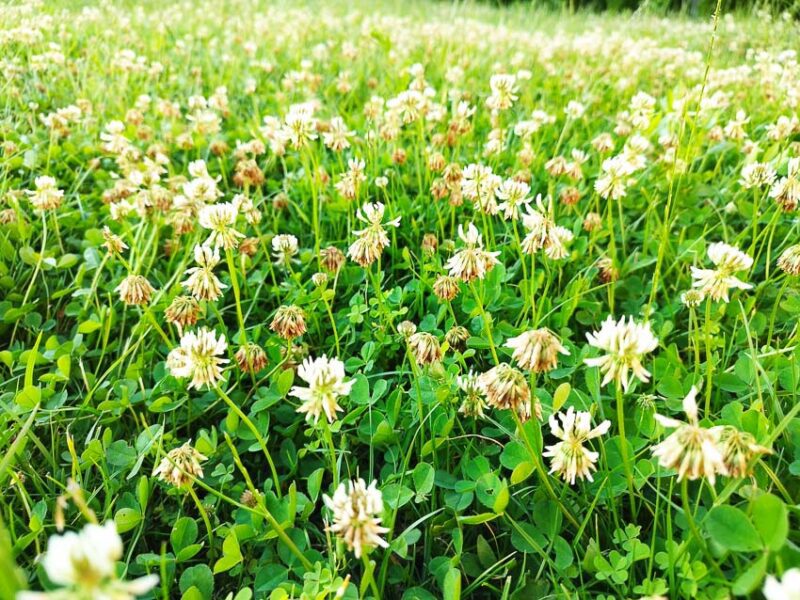
There are low maintenance grass lawn alternatives that still allow you to have a green lawn. One of the most popular choices is a clover lawn, which requires less watering, mowing, and fertilizing than traditional lawns. Native grasses and artificial turf are good lawn alternatives.
4. Do low maintenance alternatives attract pests or wildlife?
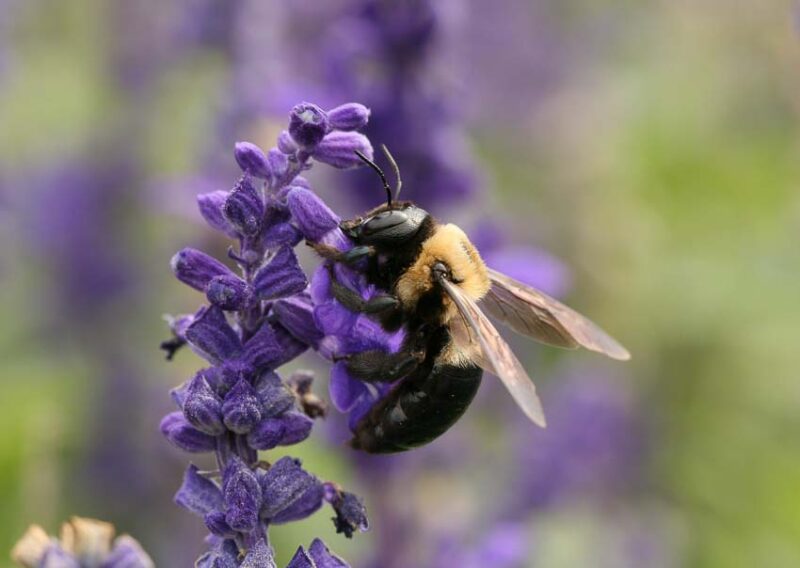
Some low maintenance alternatives do attract pests and wildlife. Monocultures like grass lawns do not attract as much wildlife because they don’t offer birds and animals what they are looking for, which is food, shelter, and water. If your new landscape provides any of these things, you could end up with more wildlife in your yard.
5. Will my homeowner’s association allow low maintenance alternatives?
Whether your HOA allows alternatives to grass lawns depends on where you live. Many HOAs allow certain types, while others don’t offer any alternatives. In Colorado, Senate Bill 178 was passed to ensure homeowners are free to install water-saving landscaping alternatives.

